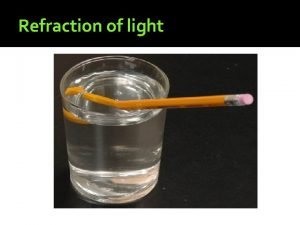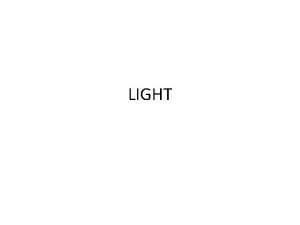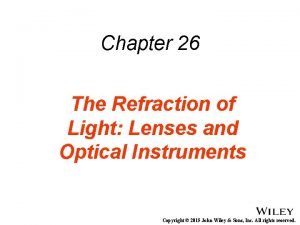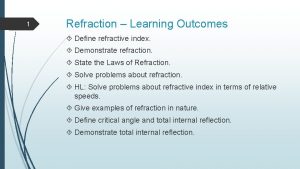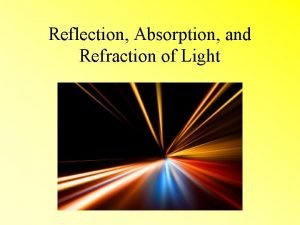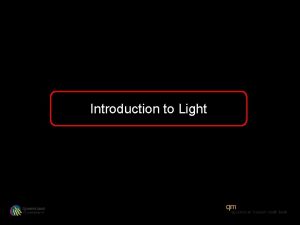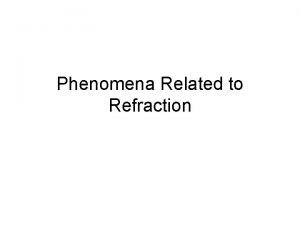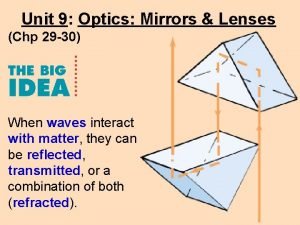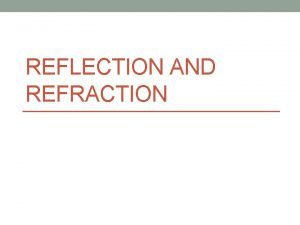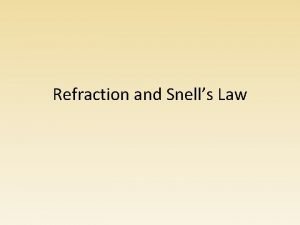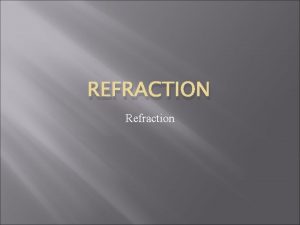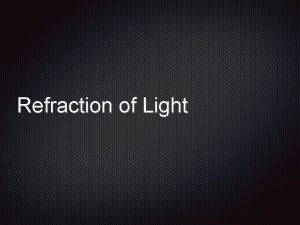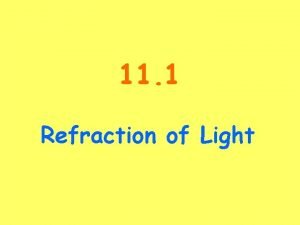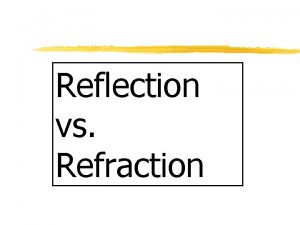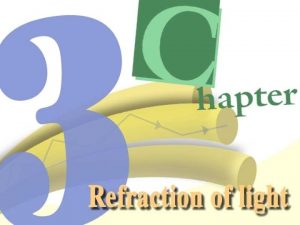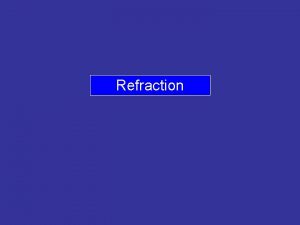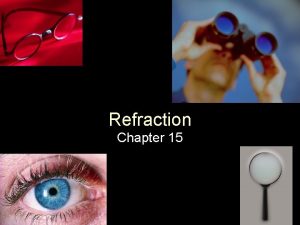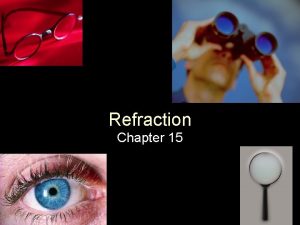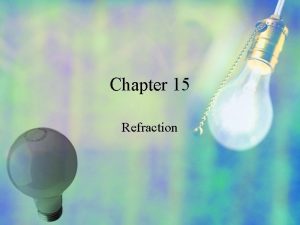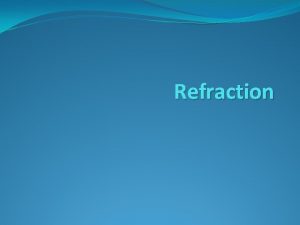CHAPTER 15 15 1 Refraction Refraction of Light













- Slides: 13

CHAPTER 15 15 -1 Refraction

Refraction of Light The bending of a light as it passes at an angle from one medium to another. Refraction occurs when light changes velocity. Figure 15 -1 The flower looks small when viewed through the water droplet because the light from the flower is bent as it passes through the water.

Refraction The speed of light is different depending on the medium it travels through. When light moves from higher to lower speed, the ray is bent toward the normal. (a) When the light ray moves from air into glass, its path is bent toward the normal.

Refraction When light moves from lower to higher speed the ray is bent away from the normal. (b) whereas the path of the light ray moving from glass into air is bent away from the normal.

Law of Refraction The index of refraction is the ratio of the speed of light in a vacuum to its speed in a medium. This value is unitless and is always greater than 1.

Objects appear in different positions due to refraction. Figure 15 -5 (a)To the cat on the pier, the fish looks closer to the surface than it really is. (b)To the fish, the cat seems to be farther from the surface than it actually is.

Snell’s Law To find the angle of refraction we use Snell’s Law equation:

CH. 15 -2 Thin Lenses

Lenses A lens is a transparent object that refracts light by either converging or diverging to create an image. Curved surfaces change the direction of light from point to point. The human eye acts as a type of lens converging light toward the lightsensitive retina at the back of the eyeball.

Types of Lenses CONVERGING When rays of light pass through (a) a converging lens (thicker at the middle), they are bent inward. When they pass through DIVERGING (b) a diverging lens (thicker at the edge), they are bent outward.

Characteristics of Lenses Converging Lens: Can produce real or virtual images Diverging Lens: Produces only virtual images Real Images can be projected on a screen; virtual cannot.

Thin Lens Equation When M is + image is real and upright. When M is – image is real and inverted.

Guided Practice Sample 15 B pg. 575
 Light light light chapter 23
Light light light chapter 23 Into the light chapter 22
Into the light chapter 22 Chapter 22
Chapter 22 Cause of refraction of light
Cause of refraction of light Concave vs convex light refraction
Concave vs convex light refraction Refraction of light in lenses
Refraction of light in lenses Laws of refraction
Laws of refraction Reflection refraction absorption transmission
Reflection refraction absorption transmission Introduction of light
Introduction of light Phenomena related to refraction
Phenomena related to refraction The action of lenses depends mainly on
The action of lenses depends mainly on When a wave reaches a boundary it
When a wave reaches a boundary it Refraction of light
Refraction of light Refracted light
Refracted light



